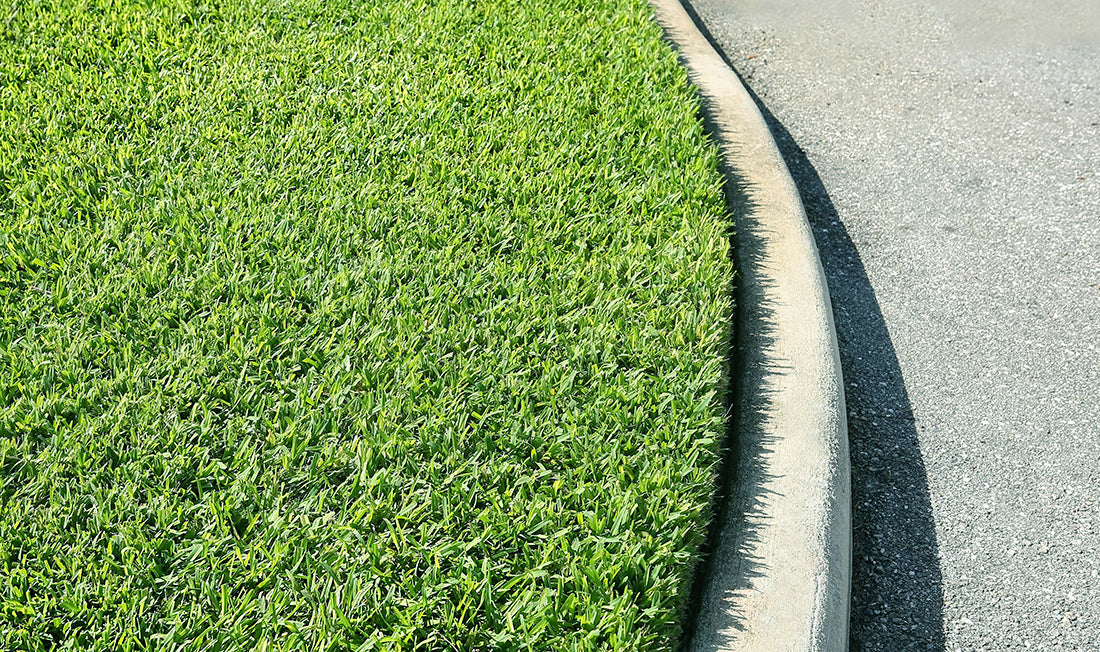St. Augustinegrass is a popular warm-season grass species that is commonly used for lawns in Florida. There are several cultivars of St. Augustinegrass available, and it can be difficult to determine which one is best for your specific needs. In this blog, we will take a closer look at the most popular cultivars of St. Augustinegrass in Florida and the characteristics that make them ideal for lawns.
Floratam
‘Floratam’ is the most widely used cultivar of St. Augustinegrass in Florida. It was released in 1973 as a joint effort between the University of Florida and Texas A&M University. As far as St. Augustinegrass cultivars go, it has relatively poor shade and cold tolerance. This grass requires a minimum of 6+ hours of sunlight per day to be a viable option for lawns. It was released as a cultivar that exhibited resistance to chinch bugs but has since lost its resistance, and chinch bugs can be a major problem. Floratam performs best when mowed above 3” and even up to a 4” height of cut. St. Augustinegrass Decline caused by the sugarcane mosaic virus can be a problem on Floratam lawns, to which there is not necessarily a cure.

Palmetto
‘Palmetto’ exhibits a more dwarf-like growth habit than other cultivars of St. Augustinegrass but is still not as compact as actual dwarf cultivars. It is advertised as a drought-resistant cultivar, but this remains to be documented in research. Palmetto can handle some shade but still will do its best when it receives full sun. Insect pests can be a major problem with this grass. Palmetto would be a good grass for those looking for a lawn with a finer texture than some other St. Augustinegrass cultivars.

Bitterblue
‘Bitterblue’ is an older cultivar known for its dark blueish-green color and fine texture. Bitterblue can stand up to shade and cold better than Floratam. Like Floratam, it does best when mowed at about 3.5-4 inches.
Seville
‘Seville’ is a true dwarf cultivar of St. Augustinegrass that does best when mowed between 2-3 inches. It is susceptible to damage from chinch bugs and sod webworms. It can handle some shade but does not do well with cold temperatures.

ProVista
ProVista is the first glyphosate-tolerant St. Augustinegrass cultivar. It is from the same genetic lineage as Floratam. ProVista has a deeper green color and improved shade tolerance compared to Floratam. It is a slow grower, so for those people who aren’t big into mowing the lawn, ProVista can result in fewer mowing events throughout the growing season.
Citrablue
Citrablue is the newest release from the University of Florida. It has a deeper blue-green color compared to Floratam. It is drought tolerant and has a compact growth habit. It looks best at lower mowing heights. Best management practices for this cultivar are still being researched at the UF.

In conclusion, choosing the right cultivar of St. Augustinegrass for your Florida lawn depends on several factors, including the amount of shade the lawn receives, the amount of foot traffic, and the likelihood of chinch bug infestation. Consult with a professional landscaper or turfgrass specialist to determine which cultivar is best for your specific needs.









